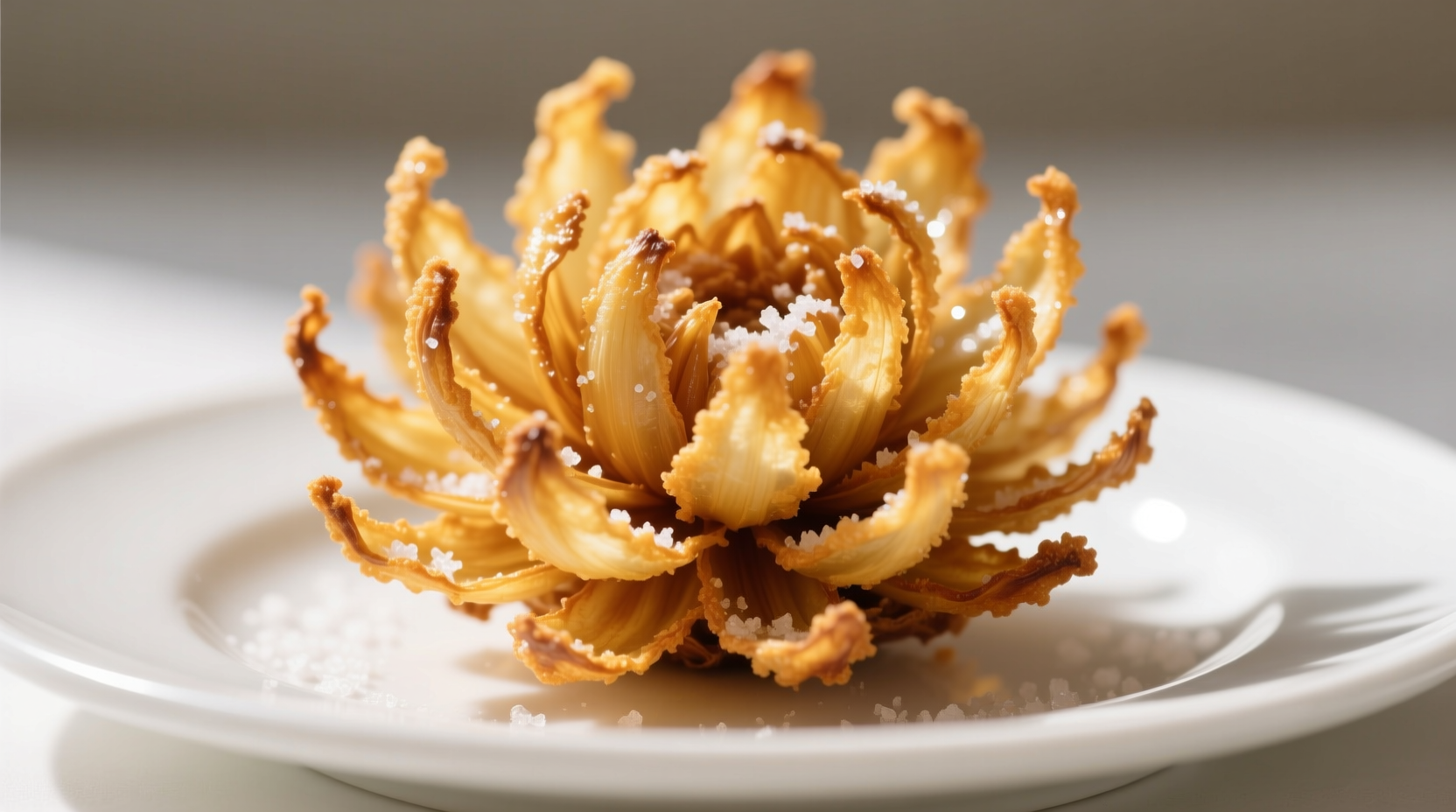When you're scanning a restaurant menu and spot that iconic blooming onion, you're probably wondering: how many calories in a bloomin onion could justify such a tempting appetizer? The answer matters whether you're tracking your daily intake, managing dietary goals, or simply making informed choices while dining out.
What Exactly Is a Bloomin' Onion?
Invented by Outback Steakhouse in 1988, the Bloomin' Onion has become a staple appetizer across American casual dining restaurants. This culinary creation features a whole sweet onion (typically a Vidalia or similar variety) carefully sliced to create a "blooming" effect, dipped in seasoned batter, and deep-fried until golden. It's traditionally served with a spicy mayonnaise-based dipping sauce.

Nutritional Breakdown: Beyond Just Calories
While the calorie count is significant, understanding the full nutritional profile provides better context for your dietary decisions. According to Outback Steakhouse's official nutrition information, a standard Bloomin' Onion contains:
| Nutrient | Amount | % Daily Value* |
|---|---|---|
| Calories | 809 | 40% |
| Total Fat | 49g | 63% |
| Saturated Fat | 7g | 35% |
| Trans Fat | 0g | - |
| Cholesterol | 0mg | 0% |
| Sodium | 2,350mg | 102% |
| Total Carbohydrates | 81g | 29% |
| Dietary Fiber | 5g | 18% |
| Sugars | 12g | - |
| Protein | 9g | 18% |
*Percent Daily Values are based on a 2,000 calorie diet. Your daily values may be higher or lower depending on your calorie needs.
Putting Those Calories in Context
At 809 calories, a single Bloomin' Onion represents nearly half of the average adult's recommended daily calorie intake. To put this in perspective:
- It contains more calories than a standard cheeseburger with fries
- The sodium content (2,350mg) exceeds the American Heart Association's recommended daily limit of 2,300mg
- The fat content equals approximately 63% of what you'd need in an entire day
Factors That Affect Calorie Count
Several variables can change the actual calorie content you consume:
Portion Size Variations
While Outback's standard is 809 calories, some restaurants serve larger versions that can reach 1,000+ calories. The size of the onion and amount of batter significantly impact the final count.
Preparation Methods
Deep-frying absorbs oil, which dramatically increases calories. According to USDA FoodData Central, 100g of raw onion contains just 40 calories, while the same amount of fried onion can contain 300+ calories.
Serving Style
Sharing the appetizer with others reduces your individual intake. Many restaurants now offer "half-order" options specifically to address portion size concerns.
Healthier Alternatives Worth Considering
If you're watching your calorie intake but still want an appetizer, consider these alternatives:
- Grilled vegetable platter (typically 150-250 calories)
- Steamed edamame (about 120 calories per serving)
- House salad with dressing on the side (150-300 calories depending on dressing)
- Homemade baked onion rings (approximately 300-400 calories using air-frying methods)
Making Mindful Choices When Ordering
You don't have to eliminate indulgent appetizers completely—just approach them strategically:
- Share with the table to reduce individual portions
- Ask for sauces on the side to control added calories
- Balance your meal by choosing a lighter main course
- Consider it a special occasion treat rather than a regular menu item
Homemade Healthier Version Tips
If you love the concept but want a lower-calorie option, try this approach:
- Use a light spray of oil instead of deep-frying
- Make a chickpea flour batter for added protein
- Bake at 425°F until crispy (about 20-25 minutes)
- Create a Greek yogurt-based dipping sauce instead of mayonnaise
These modifications can reduce the calorie count to approximately 300-400 calories while maintaining much of the flavor experience.
Understanding Restaurant Nutrition Transparency
Since the 2010 Affordable Care Act, chain restaurants with 20+ locations must provide calorie information on menus. This regulation, enforced by the FDA's Menu Labeling Rule, helps consumers make informed choices. Always check official nutrition information when available, as estimates can vary significantly from actual values.











 浙公网安备
33010002000092号
浙公网安备
33010002000092号 浙B2-20120091-4
浙B2-20120091-4